6 masterpieces of Soviet architecture from the 1920s-1950s
Shukhov Tower (1922, Vladimir Shukhov)
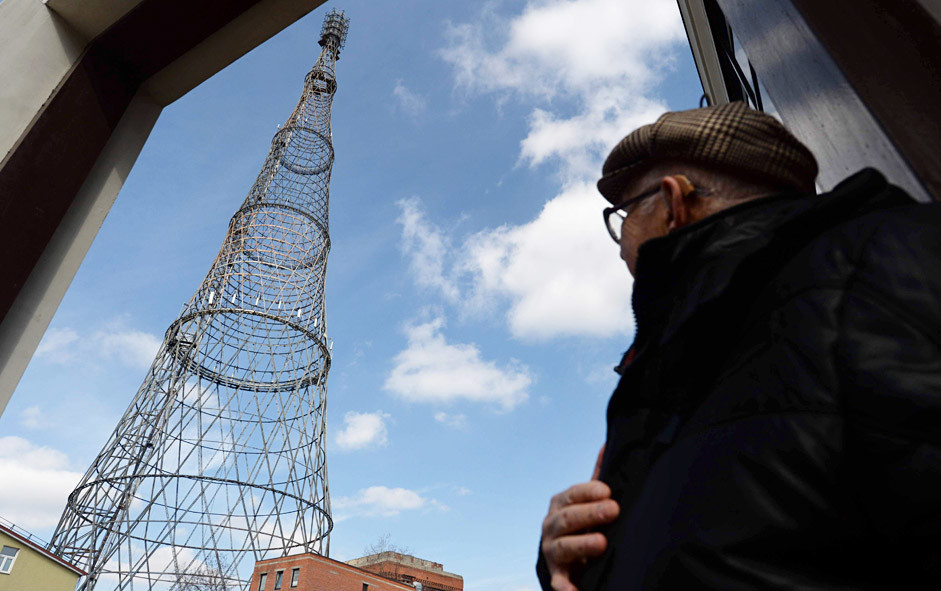
The Shukhov Tower
AFPThe Soviet government considered radio broadcasting to be the best propaganda tool in an illiterate country, so Russia's main radio tower had to look impressive. Shukhov's hyperboloid structures, which at that time had been popular at international exhibitions, looked very futuristic, exactly like Soviet propaganda art.
These structures were perfect for "heavy" constructions such as a radio tower - they permitted the tower to be large-scale and at the same time not seem overloaded. And so Moscow received the Shukhov Tower: a wonder of engineering and the symbol of Soviet radio (and subsequently television).
Address: 37 Shabolovskaya Street, Moscow. Metro: Shabolovskaya
Melnikov House (1929, Konstantin Melnikov)
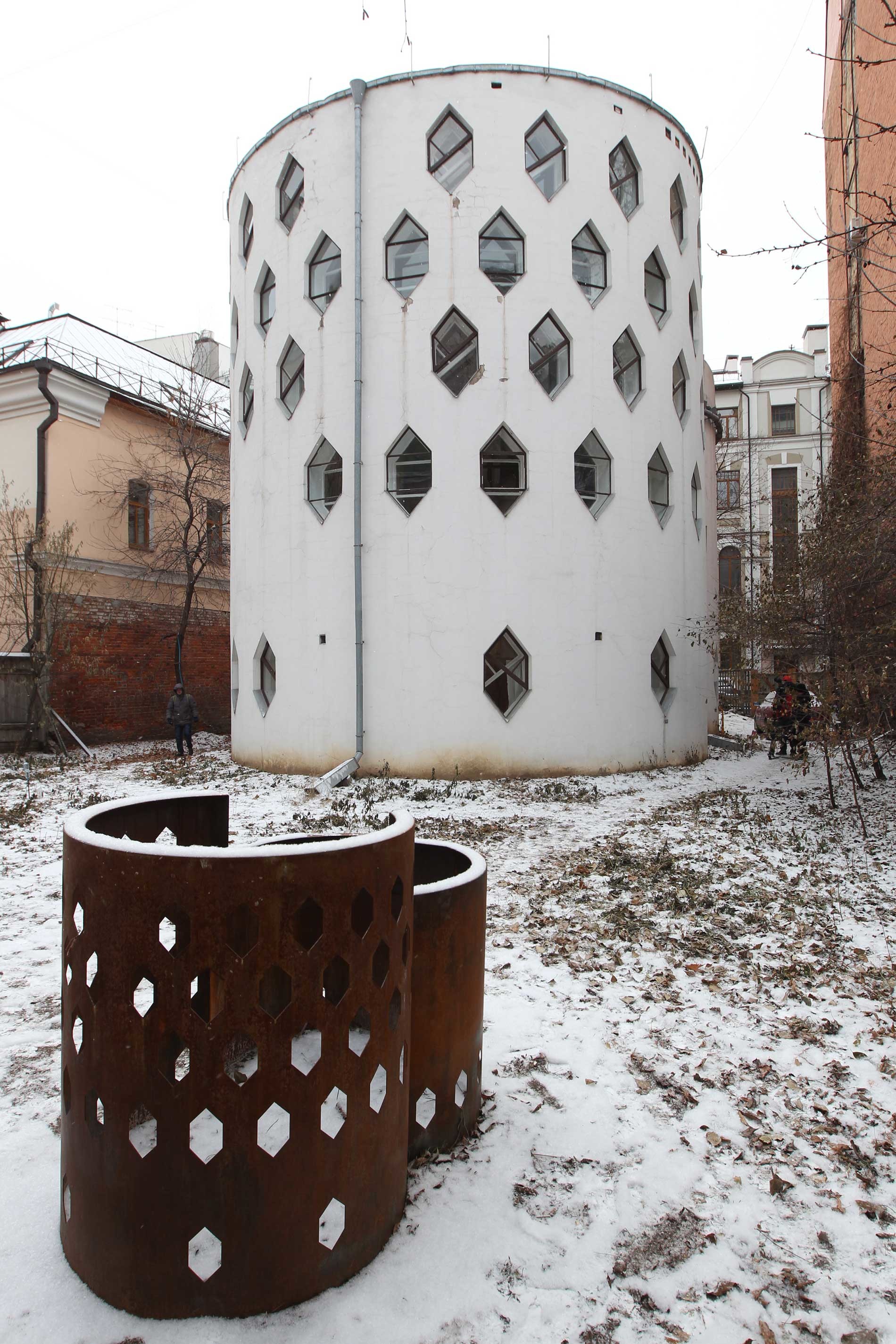
The State Museum of Konstantin and Viktor Melnikov
Sergei Mikheev / RGArchitect Konstantin Melnikov had thought of constructing a cylindrical building while participating in the competition to build the Zuyev House of Culture. Although Melnikov did not win the competition, he did not abandon his plan and continued to develop and refine it. And so the private Melnikov House acquired the form of two blended cylinders.
The ideology of the early USSR refuted everything private and demanded that architecture represent only collective interests. In the case of the Melnikov
The architect planned a single bedroom for all the family members in which they turned into a "group of sleeping people." Even though Melnikov always emphasized that his project strictly adhered to the functionality principle of Soviet architecture, Muscovites called the cylindrical building with its hexagonal windows "a residential bourgeois cell."
Melnikov had always wanted his house to become a museum, and
Address: 10 Krivoarbatsky Lane, Moscow. Metro: Arbatskaya
The Tsentrosoyuz Building (1937, Le Corbusier)
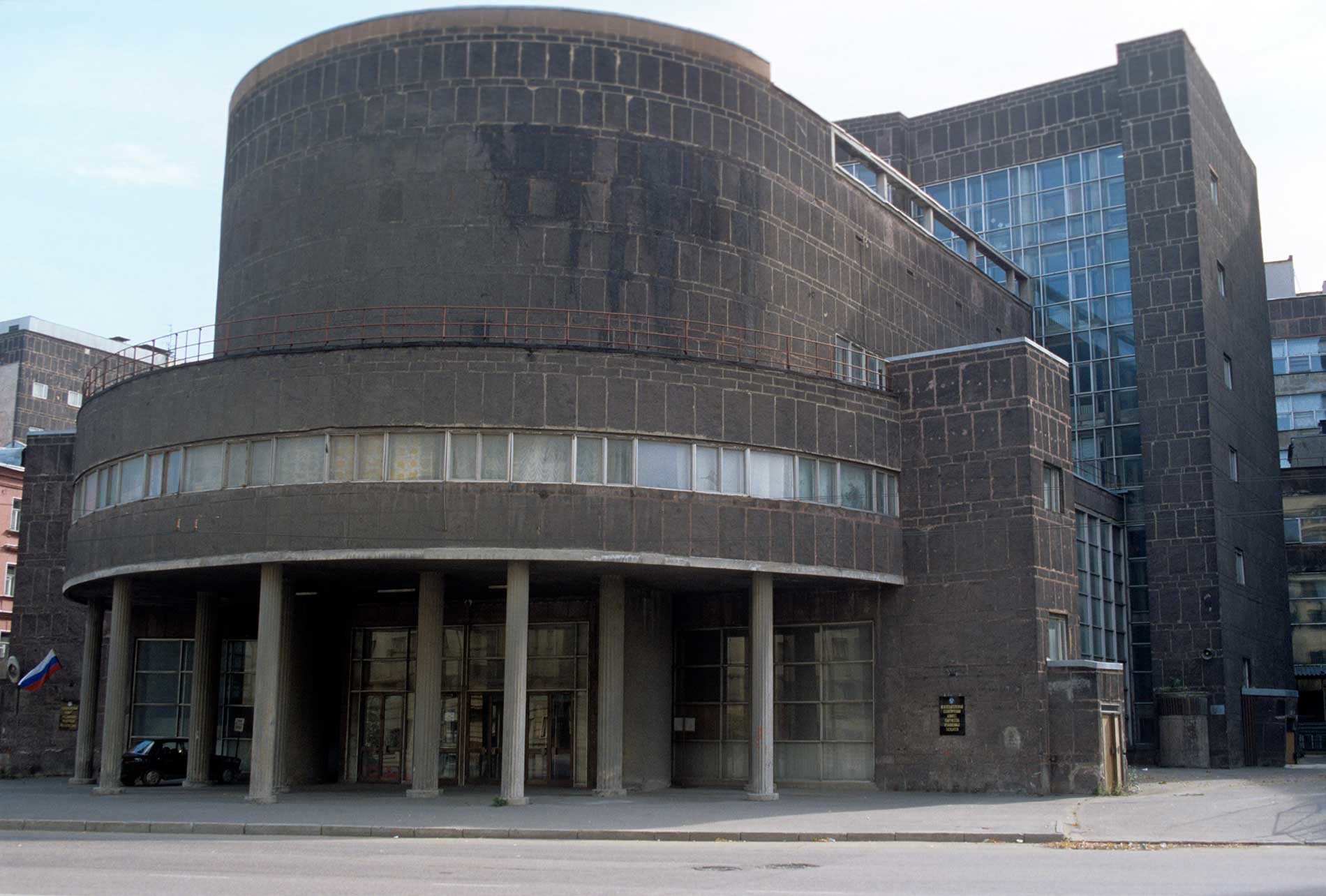
The Tsentrosoyuz building in Myasnitskaya Street, built in 1928-1935 after the design of Charles-Edouard Le Corbusier, housing now the Statistics Committee of Russia
Alexander Polyakov /RIA NovostiLe Corbusier is a master of world architecture who created the contemporary canon of office building design and was captivated by the Soviet construction boom of the 1930s. The Swiss-French architect participated and, of course, won the competition for the Consumer Societies Association building in Moscow.
In the enormous office building on Myasnitskaya Street the architect used all five of the “departure points of modern architecture,” the principles according to which office buildings are still built today. These principles include using concrete supporting pillars, flat roof terraces, a minimum of interior walls and bands of large windows.
For the average Soviet citizen, such an approach was apparently too progressive. Muscovites did not like the bulky building on its concrete "struts" with a minimalistic façade. The poet Osip Mandelstam wrote about it with irony: "Not even with a light shadow will I enter/The crystal palaces standing on chicken legs."
Address: 39 Masnitskaya Street, Moscow. Metro: Prospekt Mira
Hotel Moskva (Osvald Stapran, Leonid Savelyov, Alexei Shchusev, 1935, rebuilt in 2004)
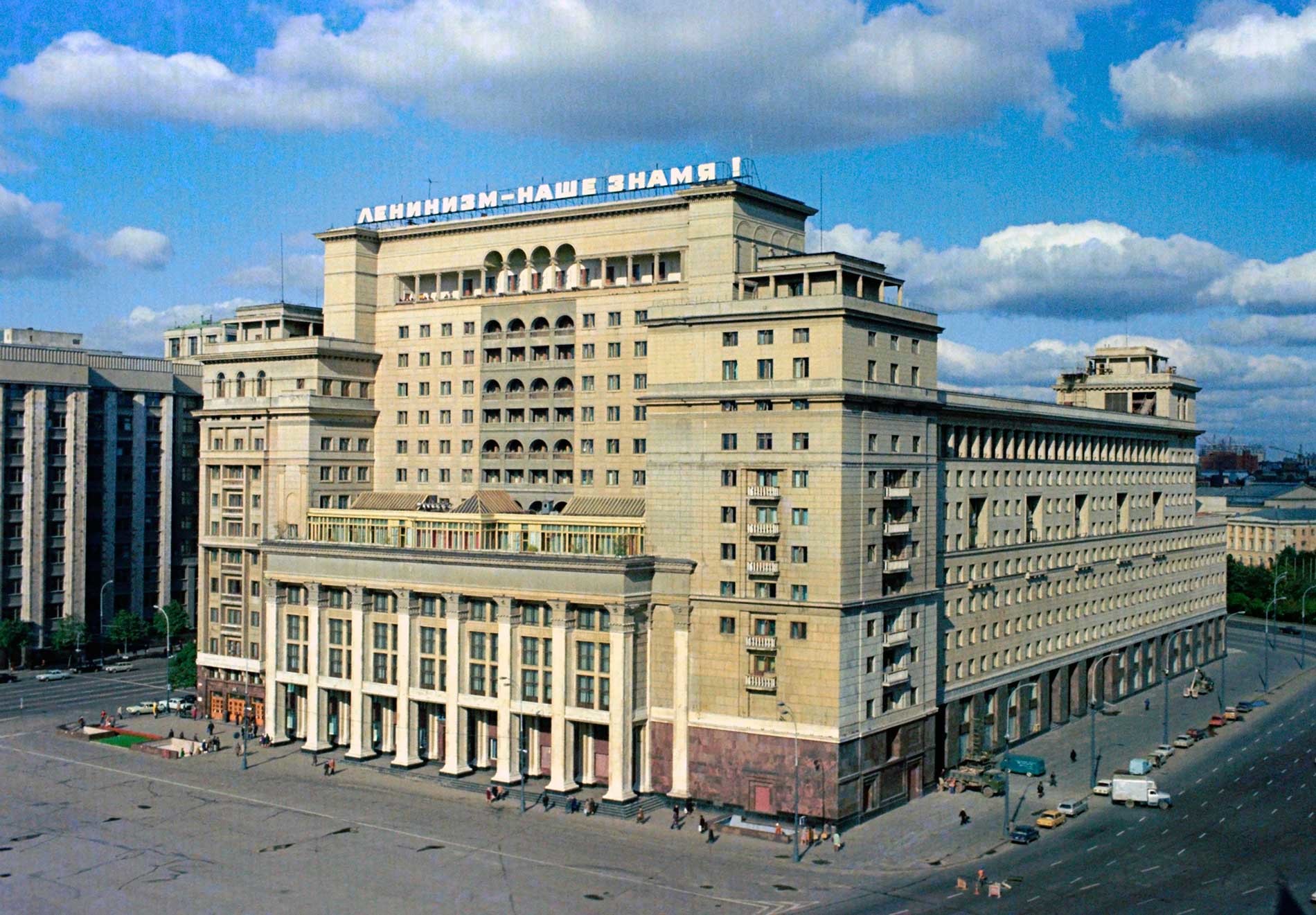
View of hotel Moskva from Manezhnaya Square, 1976
A. Solomonov/RIA NovostiAt the beginning of the 1920s, the location near the Kremlin where the Hotel Moskva currently stands was earmarked by the authorities for the construction of the Palace of Labor, a structure with enormous glass and concrete cubes, connected by an auditorium in the form of an ellipse.
Work on the palace was quickly abandoned due to the costs and complexity of the project. It was decided to build a hotel instead - a more traditional but no smaller building. Under Shchusev's
Address: 2 Okhotny Ryad, Moscow. Metro: Okhotny Ryad
VDNKh (1935-1954, various architects under the supervision of Sergei Chernyshev)
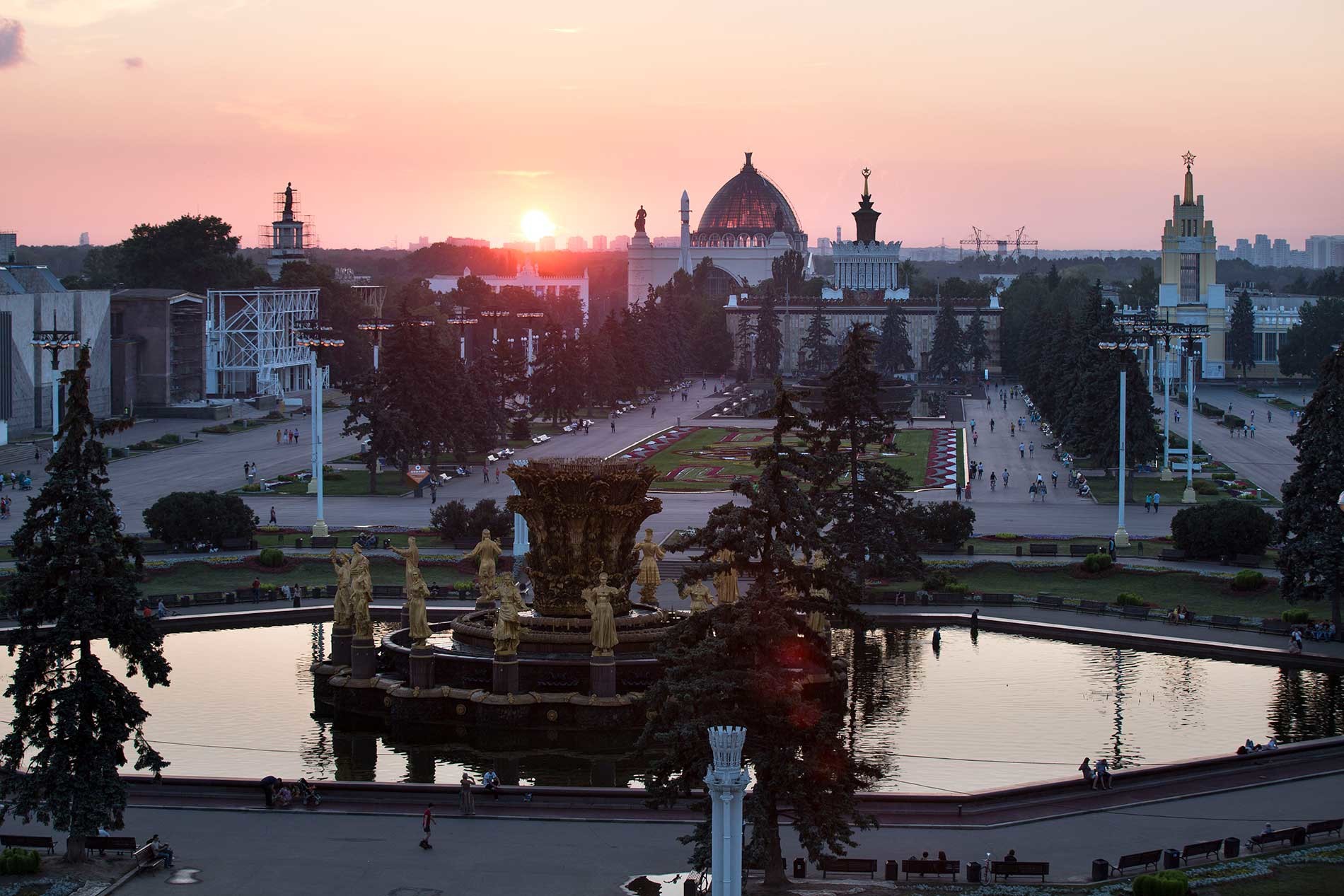
People's Friendship Fountain, VDNKh exhibition center
APThis enormous exhibition center in the north of Moscow was built so that the Soviet citizen or tourist could admire the achievements of the country's agriculture and industry. Half of the center's 70 pavilions were created in Stalinist Empire style. Featuring columns, spires,
Pavilion No. 32, built in 1939, is especially impressive.
In the 1950s a building with a glass dome was added to the pavilion, whose net-like structure resembles the Shukhov Tower. The pavilion was later named Cosmos and a copy of the Vostok rocket, the one that launched Yuri Gagarin into space, was placed on the square in front of it.
Address: 119 Prospekt Mira, Moscow. Metro: VDNKh
The Seven Sisters (1952-1957, Lev Rudnev, Dmitry Chechulin, Vyacheslav Oltarzhevsky, Sergei Chernyshev and others)

The Stalinist skyscraper on Kotelnicheskaya Embankment
Legion MediaThe center of Moscow is framed, from various sides, by the famous Stalinist skyscrapers known as the Seven Sisters: the Moscow State University building, three residential buildings, two hotels and the Foreign Affairs Ministry.
After the
Addresses:
Moscow State University: 2 Leninskiye Gory Street. Metro: Universitet
Residential Building on Kotelnicheskaya Embankment: 1/15 Kotelnicheskaya Embankment. Metro: Taganskaya
Residential Building on Kudrinskaya Square: 1 Kudrinskaya Square. Metro: Barrikadnaya
Hotel Ukraina (currently Radisson Royal), 2/1 Kutuzovsky Prospekt, building 1. Metro: Kievskaya
Krasnye Vorota Residential Building: 21 Sadovaya-Spasskaya Street. Metro: Krasnye Vorota
Hotel Leningradskaya: 21/40 Kalanchevskaya Street. Metro: Komsomolskaya
Foreign Ministry Building: 32/34 Smolenskaya-Sennaya Square. Metro: Smolenskaya
All rights reserved by Rossiyskaya Gazeta.
Subscribe
to our newsletter!
Get the week's best stories straight to your inbox